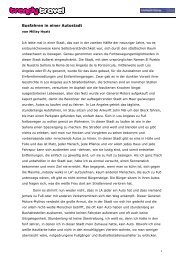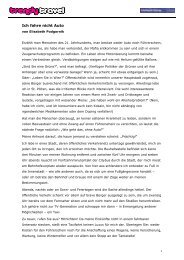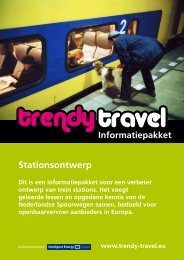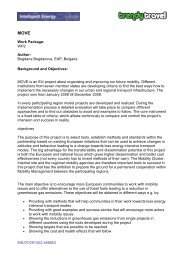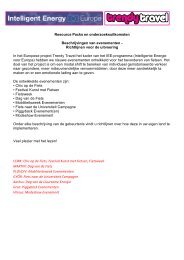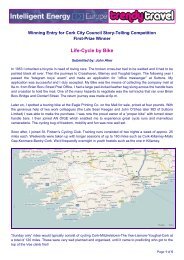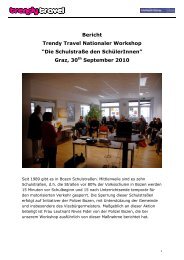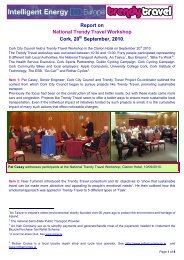Resource Pack: Railway Station Design - Eltis
Resource Pack: Railway Station Design - Eltis
Resource Pack: Railway Station Design - Eltis
You also want an ePaper? Increase the reach of your titles
YUMPU automatically turns print PDFs into web optimized ePapers that Google loves.
Passenger types (must vs lust passengers)<br />
Respondents: Members NS customer panel<br />
N=898<br />
Results study II - Interactions type of passenger x type program:<br />
Programming and attitude: evaluation of programs differs for must and lust<br />
passengers: lust passengers want information, must passengers want news.<br />
Results study II - Interaction crowding and x type program:<br />
Experienced control: With news, compared to a quit situation, more control is<br />
experienced when it is crowded at the platform.<br />
Conclusions and recommendations<br />
The pattern of results emerging from both studies is quite subtle and in some cases<br />
unexpected. It would seem that in study I the appraisal of the platform wall<br />
advertising was negative, whereas positive behavioural effects did indeed occur as<br />
were also the possibilities to influence the time perception with the image tempo<br />
convincingly demonstrated. True, subjects made it known that they were not<br />
interested in advertising, nor did they find platform advertising suitable, but they did<br />
allow themselves to be influenced by it nevertheless. The presence of platform wall<br />
advertising moreover produced positive affective reactions. Subjects indicated<br />
enjoying themselves more during the wait and experiencing the waiting time as more<br />
useful and more pleasant when platform wall advertising was present. These results<br />
suggest that one can consciously express a negative opinion of such forms of<br />
advertising (i.e. when explicitly asked), yet still affectively and unconsciously react to<br />
it positively.<br />
Passengers reacted with greater enthusiasm to infotainment on the platform screens<br />
(study II). In their opinion, infotainment offers a more positive contribution to the<br />
appearance of the station and actually leads to more positive reactions and higher<br />
marks. It would seem, however, that the positive effects on the behaviour (the time<br />
estimations) can be predominantly expected during peak hours on the platform and<br />
not when the platform is quiet. This suggests that the ‘Attentional model’ of time<br />
perception particularly applies when there is already some environmental<br />
interference present. In such a condition, infotainment apparently distracts the<br />
26<br />
EIE/07/291/SI2.466803



